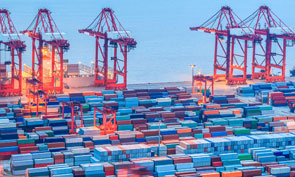
In a move that introduces more rigorous guidelines for the safe selection and usage of CTU’s, the Guidelines for Packing Cargo Transport Units (CTU Guide) 1997 have been replaced by the new Code of Practice for Packing of Cargo Transport Units (CTU Code).
The key requirements of the new CTU Code
are as follows:
In order to tighten and clarify the responsibilities within the CTU Guide, the CTU Code establishes a clear chain of responsibility. This places specific obligations on various participants within the maritime supply chain like: consignor, packer, road transporter, rail company and recipient. This is a positive change, as the cause of damage to a load can be easily identified, allowing the authorities to impose liability in relation to any incident. The Code is expected to improve accountability standards within the industry.
There are some views that the new Code will, like the previous Guide, carry little weight within the industry. But it is likely to be only a matter of time before the Code becomes an industry standard, because the significance placed on it is increasing constantly.
For legislators around the world the benefits of the
CTU Code are clear. The Code is usable when a related complaint reaches the courts, which was not the case with the Guide.
The CTU Code improves both the safety of employees handling the CTU and the security of the cargo being transported. If weight is distributed more evenly and loads are fully CTU compliant, then it is likely that accidents, injuries and deaths will consequently fall drastically while also reducing damage to loads. The need to properly prepare the transport unit, distribute weight correctly, and ensure securing under strict parameters will achieve a significant decline in the number of incidents of loss or damage to cargo.
The economic consequences of accidents are not insignificant and therefore shippers have a great interest in the proper packaging and lashing of cargo in order
to minimize losses and claims. Efforts to improve safety standards without judicial intervention have not made much headway to date. It is for this reason that the introduction of the CTU Code will undoubtedly increase the safety of loads.
All those involved in transport must show support for
the introduction of the CTU Code and set an example
in best practice within the maritime supply chain.
This initiative has been demanded for a long time
and will benefit the industry as a whole, with tangible benefits for all involved.
Adrian Costas
National Account Manager Spain
Senior Application Specialist
Accredited Cargo Surveyor
For expert advice on cargo securing solutions contact us now
Contact nowCordstrap have specialists in over 50 global locations
Providing physical insurance to the world’s major industries
Delivering cargo protection solutions